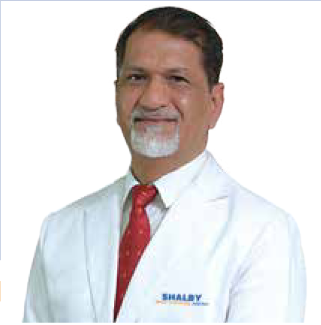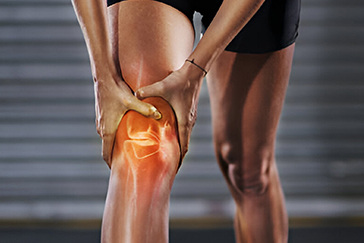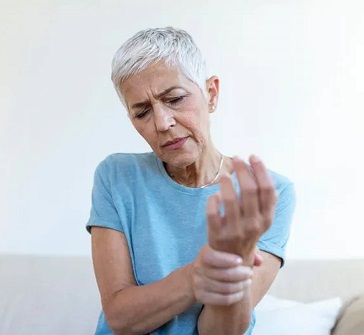 Book Appt.
Book Appt.
 Call Now
Call Now


Scoliosis is an unnatural side-to-side curving of the spine. Your spine (backbone) curves slightly forward and backward. Scoliosis causes your spine to curve to the left and right, forming a C or an S shape. The majority of cases of scoliosis are mild, without symptoms, and do not require treatment. Severe occurrences might result in unequal posture and pain. Wearing a brace or having surgery may be necessary treatments.
Types of scoliosis
There are three kinds of scoliosis:
Your provider may refer to scoliosis diagnosed in maturity as adult-onset scoliosis or degenerative scoliosis. You may have had minor, undetected scoliosis throughout your life. Symptoms can worsen or occur as your body matures, leading to a delayed diagnosis. Adult-onset scoliosis develops when your disks and joints weaken or you lose bone density (osteoporosis).
Symptoms
Scoliosis typically does not produce symptoms; however, they may include:
Causes
The cause of scoliosis varies depending on the type, but can include:
Diagnosis
Scoliosis is diagnosed by a healthcare physician following a physical exam. They may conduct a screening at their office, which will involve you standing up straight and then bending forward to touch your toes. Your physician will evaluate your back to determine the shape of your spine and how you move. They will also assess your nerves by assessing your reflexes and muscular strength. Before your healthcare professional can recommend a treatment plan, they will ask you the following questions:
If necessary, your provider may arrange imaging tests. X-rays taken from the front and side provide a complete picture of your spine. Your provider can then evaluate whether you have scoliosis and, if so, to what extent. Other imaging tests may include an MRI (magnetic resonance imaging) or a CT scan. If your provider determines that you have scoliosis and need treatment, they will send you to an orthopaedic spine expert.
Treatment
Treatment for scoliosis is not always necessary. If your clinician recommends treatment, they will consider the following aspects:
Treatment is aimed at minimizing symptoms rather than correcting the curvature. The goal is to lessen discomfort and curvature progression while enhancing your spine's functionality.
Scoliosis can be treated in two different ways:
Conservative scoliosis treatment
Surgery is not required for the majority of scoliosis cases. Rather, healthcare practitioners recommend conservative measures first, which may include:
Scoliosis surgery
Surgery may be used to treat certain kinds of scoliosis that do not respond to conservative treatments. Your doctor may suggest surgery to help stabilize your spine, restore balance, and decrease nerve pain. Scoliosis can be treated with a variety of procedures, including spinal fusion and expandable rods.
Prevention
There is no known way to prevent scoliosis. If you have scoliosis, your doctor may recommend that you stretch and exercise to strengthen your back and abdomen. These can assist to prevent the curvature in your spine from worsening.
Conclusion
Scoliosis is a spinal condition that can be moderate or severe. While the causes vary, early detection, monitoring, and therapy can help people manage their disease and minimize complications. The goal of treatment, whether by observation, bracing, physical therapy, or surgery, is to lessen the impact of scoliosis on daily life while preventing the curvature from worsening. If you suspect scoliosis or have any concerns about your spine, consult a doctor for a thorough diagnosis and treatment plan.
SHALBY Sanar International Hospitals provides extensive medical procedures backed up with our state-of-the-art technology and a team of highly qualified & experienced clinical experts.



Life Transformed: Mr. Blojah Felix Journey to Pain-Free Living | SHALBY Sanar

Pain-Free Living After 6 Years: Knee Replacement Success Story | Dr. Rohit Lamba

Bilateral Total Knee Replacement by Dr. Vikram Shah | SHALBY Sanar International Hospitals

Remarkable Recovery Story: Hip Replacement for Non-union Fracture

Incredible Recovery Story: Bilateral Knee Replacement Transformation

Knee Replacement Surgery by Dr. Rohit Lamba: 60-Year-Old's Remarkable Recovery

Renewed Hope: Successful Hip Replacement Surgery Transforms Iraqi Patient's Life

Exploring a Case of Revision Knee Replacement: Insights from Dr. Rohit Lamba

Triumphant Journey: Ms. Fatima, 69, Triumphs Over Revision Knee Replacement Surgery

Leaving the crutches behind – Riyaz, 43, gains confidence after a successful Hip Replacement Surgery

Transformative Total Knee Replacement Surgery: A New Lease on Life for 48-Year-Old Ramesh

Miraculous Recovery: 17-Year-Old Kenyan Overcomes Osteosarcoma with Mega Prosthesis Surgery

Mr. Omar Faruk's Remarkable Knee Recovery: ACL Reconstruction Success Story

Mrs. Vijay Luxmi's Remarkable Knee Replacement Journey

Umidjon, 36, from Uzbekistan shares his gratitude for a successful total hip replacement surgery

Ms. Mohsin from Iraq shares her gratitude for a successful Computer Navigated Total Knee Replacement

A Total Hip Replacement surgery gives Ms. Barry from Ghana, the ability to walk again.

Dr. Rohit Lamba talks about a successful Hip Replacement Surgery carried out on an Iraqi patient
Our doctors pen down their research findings and experiences from time to time. Their words provide deep insight into the latest techniques, technologies and other advancements in healthcare. It provides expert answers to all kinds of health questions for real-life issues.
VIEW ALL.png)
.png)



Since the day of its foundation, SHALBY Sanar International Hospitals is committed to provide comprehensive healthcare services. It regularly organizes awareness programs in its premises and encourages outdoor healthcare activities and camps with an intent to put focus on preventive healthcare.
VIEW ALL